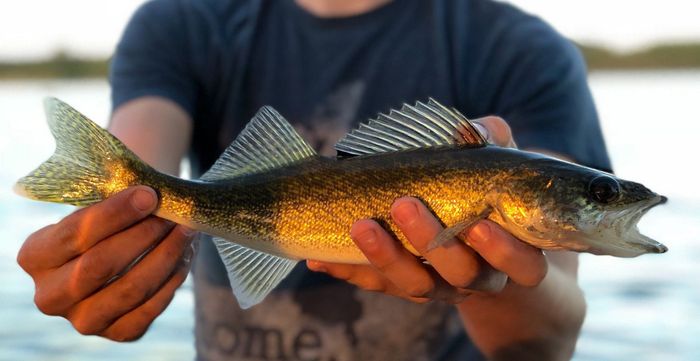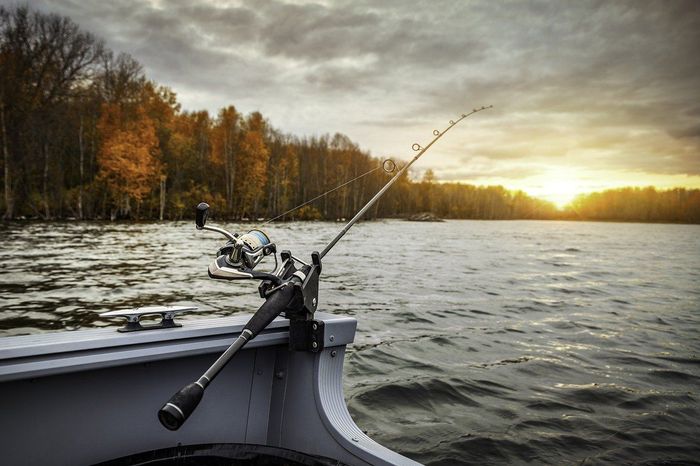Top Walleye Tactics to Get the Bite When Ice Fishing
Here are some tips on how to catch a walleye with ice fishing.

The Ice Fishing Trophy: Walleye
Walleyes are every angler’s favorite trophy fish, as they are a great challenge to catch and fantastic on the table, too. There are, however, no hard and fast rules to this game fish. But ice fishing for them will yield a better catch, as they move less during wintertime, compared to warmer seasons. Below we’ve detailed a few tactics you can use to get a bite out of this prize fish.
1. Location is Key

If you’re planning on ice fishing for walleye, consider scouting for spots around fall, because walleyes are most likely to stay where they are in fall come winter.
When looking for spots, locate structure transitions in water, mostly near mid-lake humps and shore points, as they are most likely to move in those spots during winter. Inspect for good weed beds where they will be hunting for their prey. Key things to remember — during early ice, walleyes are more likely to be spotted in shallower waters; as we move towards late ice, walleyes move towards deeper parts of the water, towards main river channels, and deeper reefs.
Once you’re on the ice, prepare your ground. Invest in a GPS unit if you’re serious about ice fishing for walleye, as this will help you locate where the fish are. Choose at least 3 to 5 spots, covering different depths and different types of structural transitions. Around those spots, drill at least 10 holes so that you’ll be ready for when the walleyes start moving and hunting for prey. Don’t drill the holes too close together to avoid accidents. Instead, drill in a crisscross fashion.

2. Time (and Lighting) is of the Essence
Walleyes feed during low-light situations, so your best bet for spotting feeding walleyes is around dusk and under overcast skies. They are not as productive at dawn for some reason, so most anglers choose to arrive on the ice during midday, during which they prepare their spots and observe for movement. Some anglers also use underwater cameras for better precision when observing for movements.
3. Fast Action Rods, Fresh Bait, Lively Lures

Ice fishing for walleyes requires a fast action rod, particularly a medium power or medium-light power rod that’s about 6 to 7 inches, with a medium-sized 35 reel. For the line, you will need something stretchy and flexible to ease the stress and shock on the gear, like an 8 LB monofilament or braided one. Combining live bait with attractive lures will excite the walleye. Minnows are a popular option, particularly the shiner or flathead. Worms and leeches work well, too. Combining a minnow with a chubby darter or an Oddball is a great option that will get your target to bite. More often than not, a bigger bait means a bigger catch, but not for the walleye during winter. So it’s important to play around with different live bait sizes.
As for bait, live bait is always the best bet, though it might be hard to keep alive during winter. Some experts say that dead bait can work, as long as you keep them fresh, because otherwise, walleyes won’t even take a bite.
Hooking the minnow properly is important when targeting walleyes. The more lively the movement, the better, as this will excite the walleyes and prompt them to take the bait. If you’re jigging on the bottom, hook the minnow through its lips to ensure lively movement. Otherwise, you should hook the minnow behind its dorsal fin as this will prompt the minnow to swim down and struggle.
4. Master the Right Amount of Aggressive
The best technique to use when ice fishing for walleyes is jigging. Expert anglers use fireball-style jig heads when jigging with live bait, particularly those in the 1/4 Oz. and 1/8 Oz range and in the color chartreuse. Jig the rod aggressively to trigger the walleye to give chase, and once the walleye is near, you can take it easy on the aggressiveness and watch as the walleye takes a bite.
If you can, use two rods in one hole. One is your deadstick, with a float and a jig head, a bobber, or a spoon hooked with a live bait (particularly a minnow hooked through its tail). The other, a longer rod, is for ripping tipped with live bait. Rip the long rod and don’t be afraid to make some noise. Start at 4 to 5 feet off the bottom for a few minutes, then pause for a bit, taking it up 2 feet off the bottom. Then you can start moving the dead stick, but with less aggressive movements. The key here is to balance your movements so that you will excite the walleye to give chase. Otherwise, they might get spooked.
When fishing for walleyes, make sure to check with the authorities which size you’re allowed to catch and keep. Most often, trophy fish measuring 28 inches are females with eggs, so it’s better to catch and release when you catch one of these.




